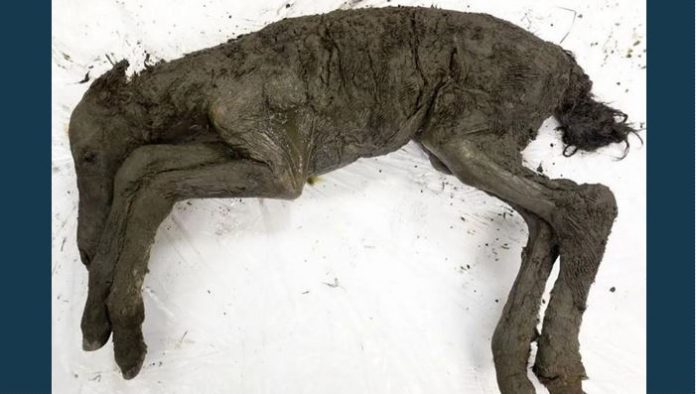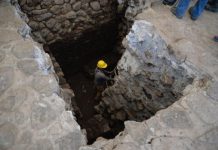
April 18 (UPI) — An international team of scientists have extracted liquid blood and urine from a 42,000-year-old foal recovered Siberian permafrost. Russian and South Korean researchers hope to use the preserved fluids to clone the ancient horse species.
Last summer, scientists at the Mammoth Museum at Northeastern Federal University found the prehistoric foal frozen in the permafrost of Batagaika crater. An autopsy revealed well preserved organs and tissue, and researchers were able to take liquid blood samples from the specimen’s heart vessels.
“This is the best preserved Ice Age animal ever found in the world,” Semyon Grigoryev, head of the Mammoth Museum in Yakutsk, told the Russian news service TASS.
The autopsy suggested the foal drowned in mud. Shortly afterwards, the mud froze and became permafrost, creating ideal conditions for prolonged preservation.
“An autopsy showed the foal carcass was extremely well-preserved, the body even without deformation,” Grigoryev told CNN. “The hair cover also preserved most parts of the carcass, especially at the head and legs.”
Grigoryev and his colleagues at Northeastern Federal University are working with scientists South Korean Sooam Biotech Research Foundation on several cloning projects, including efforts to clone the ancient foal and a woolly mammoth.
Though researchers are trying to use the blood to extract viable cells for cloning, Grigoryev isn’t particularly hopeful.
“I think that even the unique preservation [of] blood is absolutely hopeless for cloning purposes since the main blood cells — the red blood cells or erythrocytes — do not have nuclei with DNA,” he told CNN. “We [are] trying to find intact cells in muscle tissue and internal organs that are also very well-preserved.”
Researchers found a similarly well-preserved mammoth frozen in Siberian ice in 2013. Scientists at the Mammoth Museum and Sooam are working to piece together a {link:mammoth genome: https://www.upi.com/Science_News/2015/07/02/Scientists-sequence-entire-woolly-mammoth-genome/6961435867398/” target=”_blank”} using DNA fragments extracted from the mammoth.
“We’re getting an unprecedented amount of access to mammoth samples through this collaboration,” Insung Hwang, a geneticist at the biotech research firm Sooam, told a documentary film crew with the United Kingdom’s Channel 4 several years ago. “We’re trying hard to make this possible within our generation.”
Sooam made headlines several years ago for their work cloning dogs. Many scientists have criticized the firm’s ethics.
“Reviving species is controversial for a number of reasons, including the diminished quality of life for the clone, which will be subject to experiments during its entire life,” reporter George Dvorsky wrote in Gizmodo.





